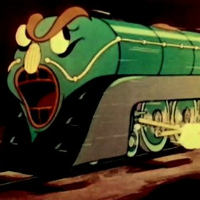Feds Saunter Toward Oil-Rail Regulations While Trains Barrel into California

The federal government took its first step this week to regulate—in the future— “high-hazard flammable trains” that are already carrying volatile, crude oil from North Dakota and Canada to California refineries.
The U.S. Department of Transportation (DOT) released a “Comprehensive Proposed Rulemaking” plan to increase the safety of the trains and improve emergency response after a wakeup call from Canada. Forty-seven people died in July 2013 when a train carrying 63 cars of Bakken crude from North Dakota derailed and exploded in Lac-Mégantic, Quebec.
In the first quarter of the year, California more than doubled the amount of oil-by-rail it usually receives. That’s not hard to do, because oil-by-rail still represents a small fraction of California refinery imports. But fracking and other extraction techniques have opened new oil drilling fields in the West, and the nation’s third-largest refining state is getting a growing piece of the action. It is much cheaper to bring in crude via train than pipelines and ships.
Railroads, energy companies and tank-car manufacturers are keen on the historic shift from shipment by water and pipeline and are moving quickly to bring the oil on line. But in the interest of speed, simplicity and “trade secrets,” business interests have been loath to share much information about routes, cargo, capacity and safety with government.
What is known for sure is that a whole lot more Bakken crude is about to stream through sensitive environments and big cities—and no one is ready. “Oil by Rail Safety in California” (pdf), a recent report produced by a group of state agencies, warns that the oil will roll past the Feather River, across the Donner Pass and through densely populated areas like Los Angeles. “A rail accident almost anywhere in California would place waterways and sensitive ecosystems at risk,” it says.
One of the primary issues, addressed by the DOT in its report, is the safety of tank cars. Only 14,000 of the 92,000 tank cars carrying crude in the U.S. have the safety features called for in the report, according to BloombergBusinessweek. The department wants to phase out the deficient DOT-111 cars within two years. Canada wants to do it in three. It is estimated that modifying the tank cars could cost $5.2 billion.
The report also calls for enhanced braking mechanisms on trains, reduced operating speeds, notification of emergency response agencies when more than a million gallons of Bakken crude it moving through and rollover protection. Any trains with more than 20 cars would be categorized as “high-hazard flammable” and be subject to the regulations.
The DOT report took special notice of Bakken oil, citing the Pipeline and Hazardous Materials Safety Administration (PHMSA) assessment that says it “tends to be more volatile and flammable than other crude oils.”
The oil industry does not concur.
The American Petroleum Institute (API) responded to the DOT by denying that Bakken crude posed any special threat. “Multiple studies have shown that Bakken crude is similar to other crudes,” API President and CEO Jack Gerard said in a release. “DOT needs to get this right and make sure that its regulations are grounded in facts and sound science, not speculation.”
It doesn’t sound like there will be a smooth rollout of the regulations or speedy consensus on infrastructure and safety changes.
–Ken Broder
To Learn More:
The White House Has a Plan to Stop Oil Train Explosions—Eventually (by Matthew Philips, BloombergBusinessweek)
Environmental Concerns over Oil-by-Rail Project Could Impact California Gas Prices (by Kevin Smith, San Gabriel Valley Tribune)
DOT Proposal to Lower Speed of Oil Trains Would Exclude Smaller Cities (by Curtis Tate, McClatchy)
State Confirms Huge Jump in Dangerous Oil-by-Rail Shipments but Details Are a Trade Secret (by Ken Broder, AllGov California)
U.S. DOT Announces Comprehensive Proposed Rulemaking for the Safe Transportation of Crude Oil, Flammable Materials (U.S. Department of Transportation)
- Top Stories
- Controversies
- Where is the Money Going?
- California and the Nation
- Appointments and Resignations
- Unusual News
- Latest News
- California Forbids U.S. Immigration Agents from Pretending to be Police
- California Lawmakers Urged to Strip “Self-Dealing” Tax Board of Its Duties
- Big Oil’s Grip on California
- Santa Cruz Police See Homeland Security Betrayal in Use of Gang Roundup as Cover for Immigration Raid
- Oil Companies Face Deadline to Stop Polluting California Groundwater





